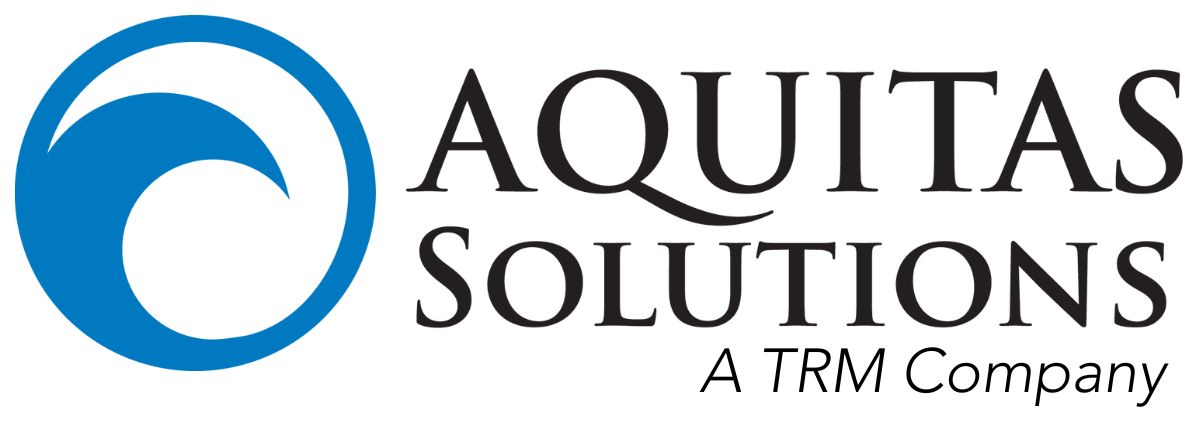Series Overview:
This four-part blog series is intended to cover the principles and best practices around the management of asset information. The aim is to provide strategic guidelines to organizations who are seeking to incorporate IIoT in their asset management strategy or to acquire or optimize their CMMS or EAM. The series will be published in the order listed below so that readers will be able to logically advance through creating a management system for asset information.
The four parts in the blog series are as follows:
- Part 1 – Asset information and sources
- Part 2 – The Importance of asset information to decision-making
- Part 3 – Managing Asset Information
- Part 4 – Summary & Conclusions
Part 3 – Managing Asset Information
Part 3 of this blog follows on from Part 1, which defined asset information and linked it to common life cycle phases and Part 2, which focused on common information pitfalls and how organizations can avoid them by deliberately integrating asset information into their decision-making system. Part 3 will outline strategies and techniques that organizations can implement to manage their asset information and advance their digitalization effort.
Asset Information Management System (AIMS)
One obstacle that organizations run into is that they are flushed with data that is not fit for purpose nor useful for decision-making. This underscores the point that asset information only provides value if it is proactively managed. Proactive management of asset information requires a management system.
An Asset Information Management System (AIMS) is a set of interrelated processes and systems aimed at managing the asset data over the asset’s life cycle to support asset management objectives. The goal of the AIMS is to improve the effectiveness of investment decisions based on whole life cycle costs and risk impact areas. The AIMS includes information and digitalization strategies, information standards, strategy for software, hardware, and infrastructure integration and data management.
Figure 1.0 – Components of Asset Information Management System (AIMS)
Asset Information Strategy
An asset information strategy identifies the required asset information to make the financially optimized decisions and the most appropriate way to manage the required asset information. The main components of an effective asset information strategy are shown in Figure 2.0 below.

Figure 2.0 – Components of Asset Information Strategy
Defining information required for decision-making is the first step in developing the strategy. This information will be managed for the asset portfolio, the asset management system, and the resulting activities. These information requirements will form the basis for the AIMS and will ensure that the information is fit for purpose and aligned to the asset management objectives. For accountability, each asset type should have an identified owner or custodian. There are two categories of asset information: organization-centric and asset-centric.
Understanding the maturity of current practices is also a key planning tool. Maturity assessment is based on the information requirements and asset management goals and measures the information maturity level across three axes: people, process, and technology. It is a continuous improvement tool that should be repeated regularly, making it a strategic planning tool as well.
Although asset information policies are often included in asset management policies, the current maturity of practices in some organizations will warrant a separate policy to marshal resources and identify information owners and objectives of the AIMS.
Digitalization Strategy
A major hurdle that organizations face is how to strategize around asset information given the current pace of disruptive technologies. Speed goes against the way that some organizations traditionally develop any kind of strategy. This very lethargy will expose the organization to significant risks and must be met with transformational strategies. In Part 2, I mentioned two key risks that organizations are facing in 2019: aging IT infrastructure and culture that is resistant to change. On the other hand, randomly investing in new technology and generating large volumes of information that no one finds useful is also a high-risk scenario. In other words, taking an ad hoc, dispersed approach presents the same levels of risks as not doing anything at all. The digitalization strategy must therefore address these and other areas of risks proactively.
It is important to understand that digitization will not happen organically; it requires specific and holistic focus to be successful. As with all other asset management strategies, digital transformation needs to have executive level oversight. Executives are the only ones vested with authority to tackle organizational culture and silos that inhibit the flow of information between departments and groups. For organizations that have not been focusing strategically on asset information, the transformation may be significant. The strategy to build out a new digital organization must therefore specifically address the following:
- A dynamic road map of activities that will be undertaken, how they will be integrated with other organizational processes to break down information barriers and how the cultural transformation will be managed. This will prevent the organization’s efforts from being fragmented. A clear path will also help to manage fear and determine the required resources. A dynamic plan will be responsive to changes in the environment while maintaining focus on the overall direction.
- Steps that will be taken to educate top management about IIoT and other disruptive technology and their impacts on organizational objectives. This is because executives that are not knowledgeable about IIoT and its impact on their operations may themselves become barriers to the transformation effort. Senior management is the highest level of decision-making in the organization, and the more knowledgeable the executives are, the more supportive and engaged they will be.
- Speed of the changes and the timing with which they will be undertaken given the capability of the organization to respond to the required speed and timing.
The final strategic effort is to develop an information maturity improvement plan recognizing that the implementation of an improvement plan premised on culture change is not a one-off event and will take time. The plan requires senior management oversight, and the specific strategies are to be owned by the respective information custodian.
Asset Information Standards
Another mistake that companies make is not defining standards to specify what the information should look like and how decisions are to be made. Standards are vital because they are the internal rules and guidelines to convert data into useful information in a consistent way. Below are examples of criteria for an asset becoming a managed asset to be included in the asset registry:
- High-value asset with ongoing need to record and analyze useful life and life cycle costs;
- High criticality reflecting significant environmental, safety, or operational impact;
- There are legal requirements for identifying the individual asset and proving compliance;
- Required for grouping purposes on the hierarchy to facilitate cost and work roll up;
- There are operational or maintenance requirements to record performance or condition data;
- There are requirements to record and manage warranty;
Asset Information Systems
Asset information system is the combination of software, systems, architecture, infrastructure, and interface use to store, manipulate, analyze and retrieve the information in a format that is useful to stakeholders. There is no single system; instead several systems are used based on organizational context and strategy. Examples of information systems include CMMS, ERP, Process Control System, Project Management Information System, and Document Management Systems.
Key considerations include network capability for speed and volume, as well as standards for devices and IT hardware that will allow IIoT devices to be integrated into business networks without compromising business data. As IT and OT converge, so should the organizational processes to allow for the seamless flow of information between the two units. For example, maintenance personnel now need to be regulated by the same IT standards for network connectivity and cyber security that the IT department is governed by.
Data and Information Management
Data and information should be managed to ensure that it is available and suitable for stakeholders’ use when it is needed and in the required format. Information should also be protected from inappropriate access and loss of integrity. Key considerations for data and information management include data quality, governance over access and modification, and the responsibilities of information owners and users.
Data has a life cycle of its own, and all aspects of that life cycle should be controlled including how data is distributed, accessed, retrieved, used, stored and preserved. Equally as important is the management of changes including version control. The organization should be fully aware of the retention period and should have processes in place to properly dispose of the information at the end of the retention period.
Information custodians have important responsibilities in managing asset data and information. Some examples are to:
- Maintain and update the asset information
- Assure the quality of information
- Make the asset information available to authorized stakeholders in an agreed format
- Accept new information and update the relevant information system
- Provide access to the information system (and training) to authorized stakeholders
- Record asset management activities
- Record configuration changes
- Maintain security of information and adhere to IT security strategy
Join us for Part 4 where I will summarize and conclude this blog series.
References:
Greeman, S. Managing Asset Information Strategically. Retrieved from: https://greemanassetmanagementsolutions.com/managing-asset-information-strategically/.
The International Organization for Standardization. (2014). ISO 55000:2014 – Asset management — Overview, principles and terminology. Genève, Switzerland: International Organization for Standardization.
International Organizational for Standardization. 2014. ISO 55001:2014 – Asset Management- Management systems – Requirements. Genève, Switzerland: International Organization for Standardization.
International Organizational for Standardization. 2018. ISO 55002:2018 – Asset Management- Guidelines for the Application of ISO 55001:2014. Genève, Switzerland: International Organization for Standardization.
The Global Forum on Maintenance and Asset Management (GFMAM). The Asset Management Landscape, Version 2. Retrieved from www.gfmam.org).
About the Author:
Suzane Greeman, ASQ-CMQ/OE, CAMA, CAMP, CMRP is the author of the Risk-based Asset Criticality Assessment (R-b ACA©) Handbook. She is the Principal Asset Management Advisor of Greeman Asset Management Solutions Inc., a firm specialising in asset management, maintenance, and reliability advisory services and education. Suzane has over 21 years of experience across cement, power generation, and wastewater industries. Her areas of expertise include developing asset information management strategies and systems, developing and deploying asset management policy, developing asset management business processes, leading multi-functional project teams, managing capital and maintenance management programs, and organizational capacity-building. Suzane is a member of MC/ISO/TC 251 – Asset Management, Canada’s mirror committee for ISO 5500x.
Categories: Asset Management
Tags: Asset Information, Asset Management Decision-making, Asset Information Management Systems, Information Strategy, Information Systems, Information Standards, Data and Information Management.



